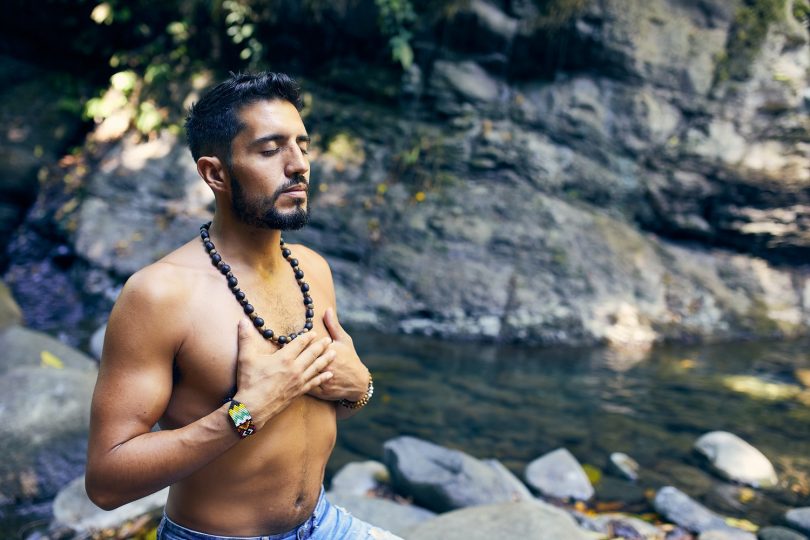It’s simple: when we breathe better, we feel better.
Christina Brown, 2003
What, another article on breathing in yoga? I know, there is a lot of literature out there telling us to breathe deeper and alternate our nostrils. So, I am not going to go into pranayama. I am not going to purport to know the best breathing techniques. I am not even going to box breathe whilst tapping away on my keyboard! Instead, I want to focus on breathing and its relationship with relaxation and stretching.
I am a ‘new kid on the block’ when it comes to yoga teaching, recently qualifying with the British School of Yoga (BSY) and am enjoying running my first few classes. I have a rich and varied work background, including coaching and guiding people of all ages through adventurous activities, as well as teaching academic studies. I have practiced yoga for over 20 years but dominated by developing flexibility through asanas. The BSY course and wider reading really opened-up my understanding of yoga philosophy and poked a past interest in human biology.
In any discipline, I love it when science supports what we know works and in my final BSY exam was asked the following question, which just begged for a link between philosophy and science.
Should the stretching of muscles coincide with inhalation or exhalation?
It may be understood that the body and mind are holistic, comprising a myriad of processes working in harmony, allowing effective and efficient functioning. Within this harmony are temporary, physiological changes which, if understood, may be used to enhance relaxation of the body and the stretching of muscles.
One such process is the action of the diaphragm and how it impacts the body. The diaphragm is a large muscle found in the chest, forming the floor of the thoracic cavity. This muscle is the main one responsible for breathing. When it contracts, the diaphragm descends the thoracic cavity creating negative pressure and drawing air into the lungs, which inflate. When the diaphragm relaxes, it ascends the thoracic cavity creating positive pressure which compresses the lungs and forces air to be expired. All very efficient and without it there would be no breath, no life.
Such a large muscle impacts other parts of the body, the effects of which can be used to support relaxation techniques and our ability to stretch muscles. The contraction of the diaphragm on inhalation (in-breath), gently compresses organs below the thorax, such as the liver. It also engages other muscles, such as the intercostal muscles of the rib cage, thus creating a state of tension. When the diaphragm relaxes on exhalation (out-breath), the opposite occurs with an overall relaxing effect through the body. Harnessing this means we can accept a slight increase in tension on inhalation, knowing that it is possible to relax a little more each time on exhalation. The effect is progressive and cumulative, with a little more relaxation achieved with each exhalation. This greater level of relaxation applies to the muscles, which can stretch more readily during exhalation.
Unsurprisingly, there is also a role being played by the heart and lungs.
Physiologically, when one inhales blood is shunted to the heart and lungs. Pressure receptors in the body sense the increase in pressure and ready the body for action, momentarily increasing sympathetic activity and tension. During exhalation, the opposite occurs, the heart being slightly more relaxed, which increases parasympathetic activity, relaxing the body. This is why increasing the length of exhalation during pranayama is relaxing. Stretching during exhalation harnesses the body’s natural wave of tension followed by relaxation. Some sources suggest that stretching during deep, long exhalation can also benefit from holding through the rest period prior to the start of the next inhalation.
I am uncertain that this greater depth of knowledge has changed my actual yoga practice. However, with my scientific curiosity satisfied, I do enjoy aspects of controlled breathing even more. But that’s just me . . .
References:
British School of Yoga, Lessons Two, Three and Six, Yoga Teacher (Hatha Yoga) Course notes
Brown, C., 2003, “The Yoga Bible: the definitive guide to yoga postures”, Godsfield Press, London (ISBN 1-84181-192-0)
Lidell, L., 1999, “The Book of Yoga: the complete step-by-step guide”, Ebury Press, London (ISBN 0-85223-297-7)
Swanson, A., 2019, “Science of Yoga: understand the anatomy and physiology to perfect your practice”, Dorling Kindersley Limited, London (ISBN 978-0-2414-4234-0)
Tucker, L., 2005, “An introductory guide to anatomy and physiology”, Holistic Therapy Books, Cambridge (ISBN 1-903348-04-8)
Yoga London, 2020, “Five beginner breathing exercises”, (on line)
Main photo by Darius Bashar on Unsplash



